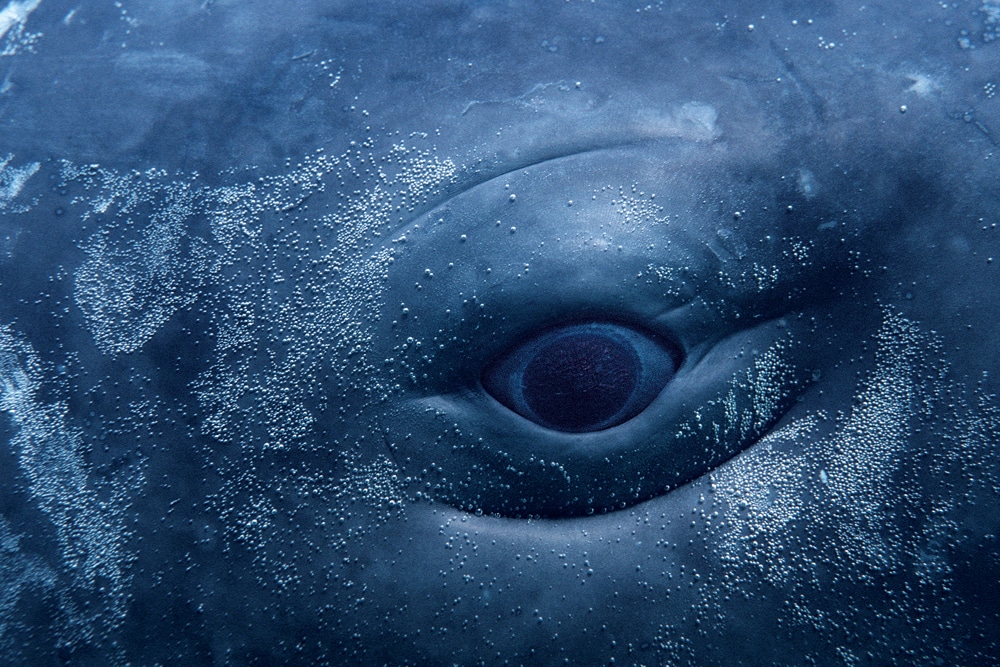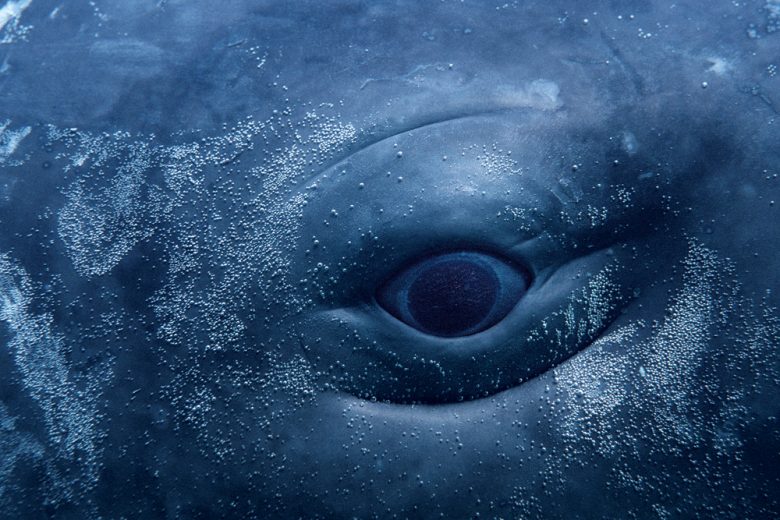Lessons from a Whale’s Eye | First Person
Justin Shatwell explains why a good museum should make you nervous in this thoughtful and humourous essay.

Lessons from a Whale’s Eye
Photo Credit : Nature Picture Library/AlamyI visit museums to feel fear.
I have a clear memory of myself as a child in the Museum of Natural Science in Houston. I’m following behind my parents as we walk down a narrow hallway. Bored and half asleep, I’m tracing my fingers absentmindedly along the wall when suddenly I become aware that my hand isn’t touching plaster, but rather a massive open eye. As I stand there, frozen, struggling to comprehend that what I had thought was a wall was in fact a giant replica of a sperm whale, my tiny mind first knows terror. I’ve had a phobia of whales ever since.

Photo Credit : Nature Picture Library/Alamy
Through the years my reactions to museums have mellowed, and to the best of my recollection I haven’t cried in one since I was 10 (robot dinosaurs, in case you were curious). Museums rarely take me to the threshold of true fear anymore, but I continue to visit them, content to revel in fear’s sister emotions: anxiety, uncertainty, and awe.
Once at Fort Knox in Bucksport, Maine, I lingered in the catacomb-like tunnels too close to sunset and was left with only the fading blades of sunlight filtering through the turret windows to guide me out. As the steps in front of me grew harder to see, I panicked for a moment, and suddenly I was a child again, lost in the woods for the very first time.
In Portsmouth, New Hampshire, I explored the USS Albacore entirely by myself, without anyone to make sure I didn’t touch any of the dials or gauges. Alone in a submarine, I was filled with the sense that I was somewhere I ought not be, and I crept through the empty vessel with the same knot in my stomach and grin on my face that I had when I would sneak into my parents’ closet.
Frequently I’ll find myself in a history museum, staring at some forgotten Egyptian prince marked with the date 2,000 B.C. Each time I ponder how this statue came to be as many years before Christ as I came after him; each time I am numbed by my own insignificance.
I do not do these things out of masochism or nostalgia. I do not visit the past to bury myself in it. Rather, I do it to keep my life moving forward.
Today it’s easy to drift along the path of least resistance. Every hotel room, airport terminal, and department store has been scientifically designed to make us feel entirely at home. Museums are the opposite of this. In a black-and-white world, they are a bouquet of color. They are the statistical outliers to society’s homogenized curve. They are buildings dedicated to taking you out of your element—castles with winding, unfamiliar floor plans, full of artistic wonders, deteriorating taxidermy, and the treasures of civilizations. They exist to bring you face-to-face with the unknown in a world where there is so little of that left.
A good museum is like the first day of school. It should make you nervous. It should confront you with things you’ve never seen and ideas you’ve never wrestled with. It should force you to blaze new trails through the virgin gray matter of your brain.
And so I visit museums. I do it with a prayer that I will find myself alone in a room with something that makes my pulse quicken. I do it with the hope that I will find something that will terrify me as completely as that ominous, probing eye. Because looking back on it today, I realize that it was not the whale itself that I feared, but the fact that it was so close and I was so blind to it. In that moment my presumptions disappeared, and I could not escape the fact that I am a tiny thing and the world around me is so terribly, beautifully large.
Justin Shatwell
Justin Shatwell is a longtime contributor to Yankee Magazine whose work explores the unique history, culture, and art that sets New England apart from the rest of the world. His article, The Memory Keeper (March/April 2011 issue), was named a finalist for profile of the year by the City and Regional Magazine Association.
More by Justin Shatwell

